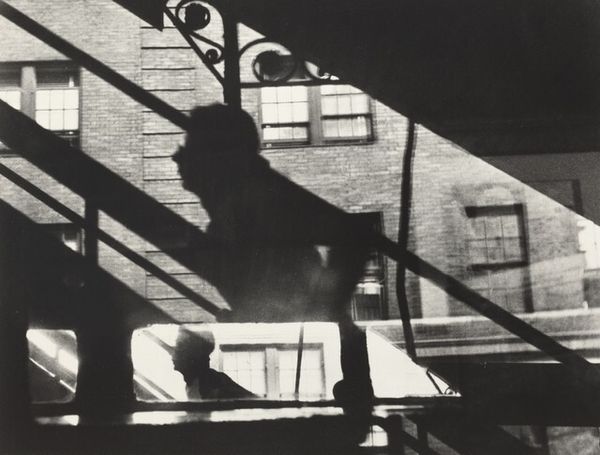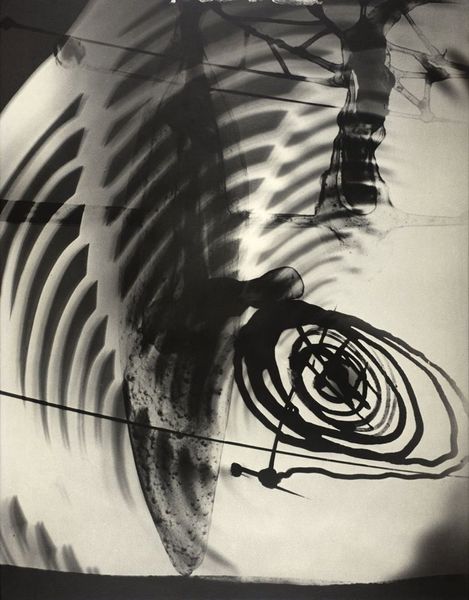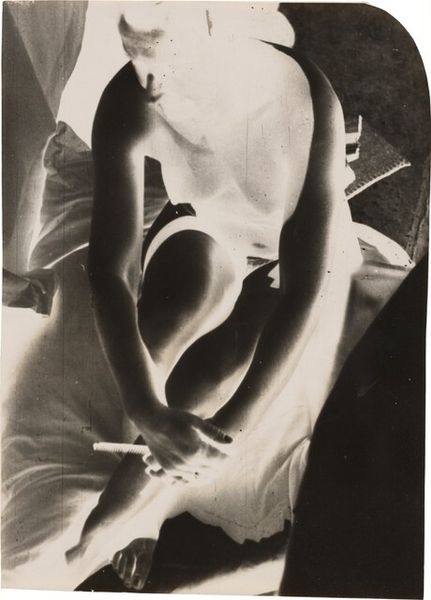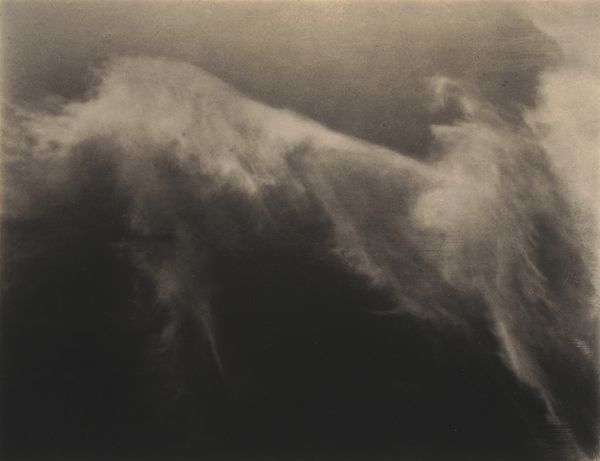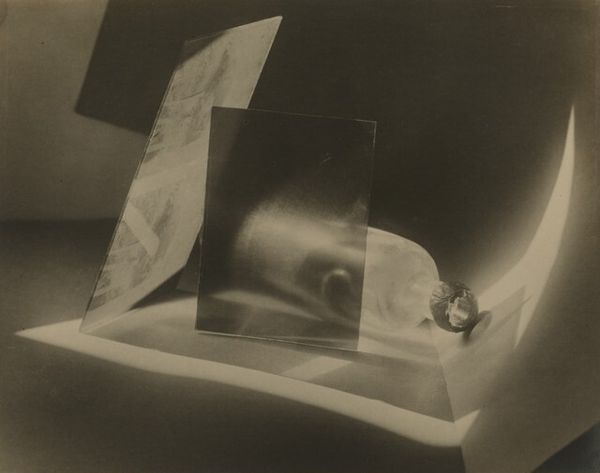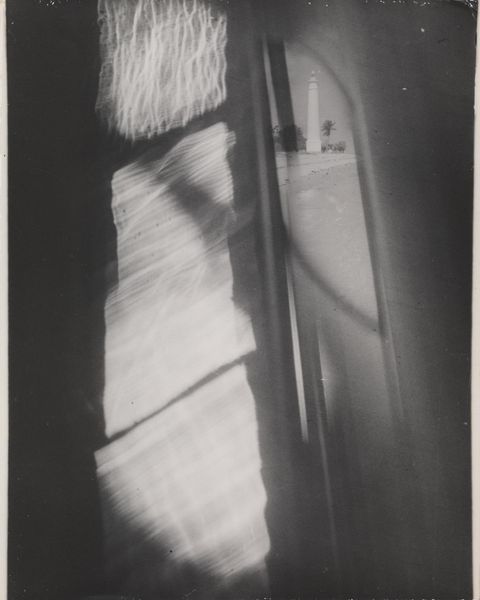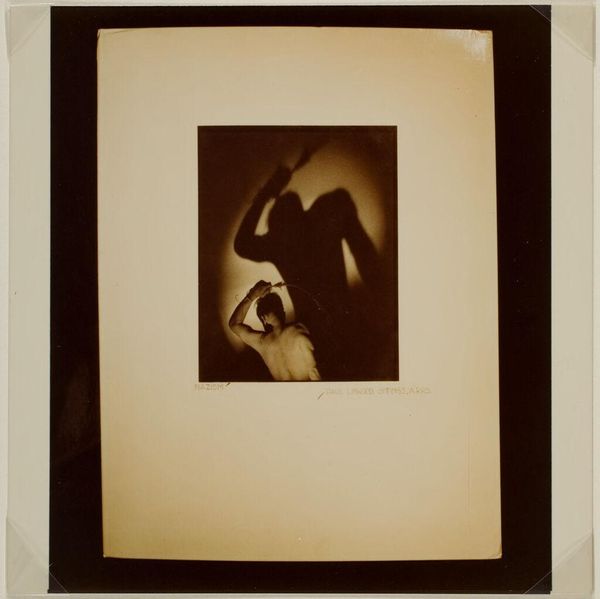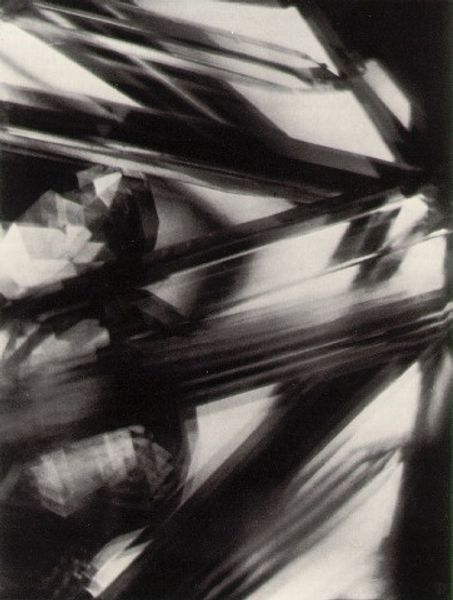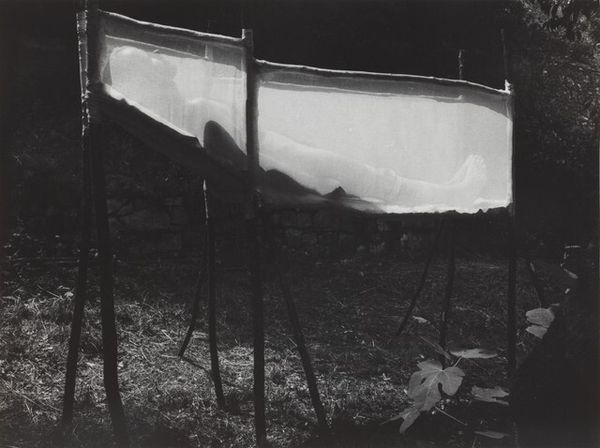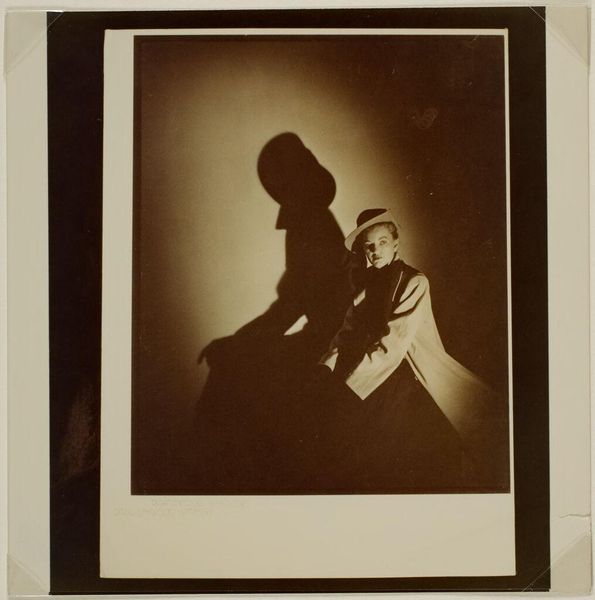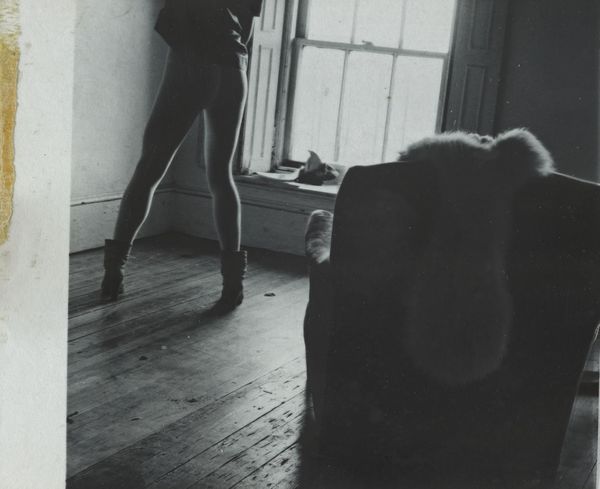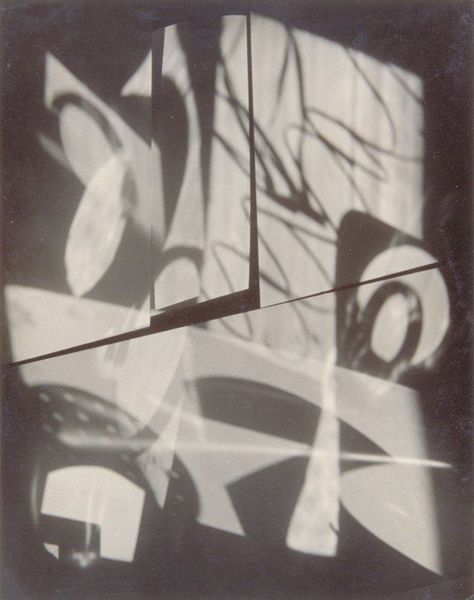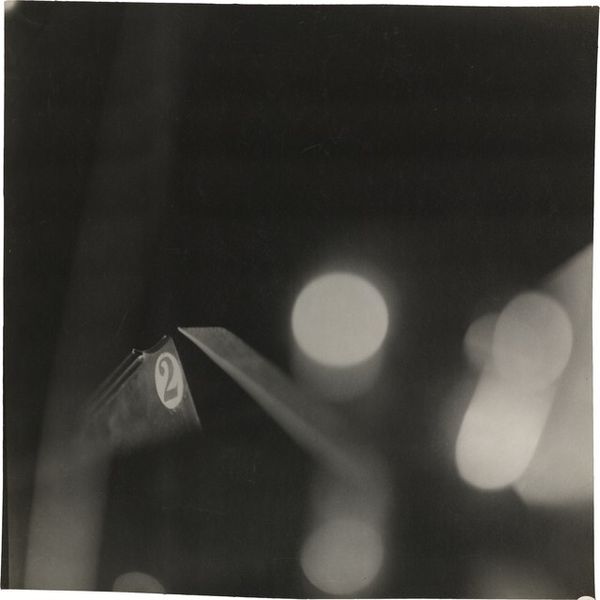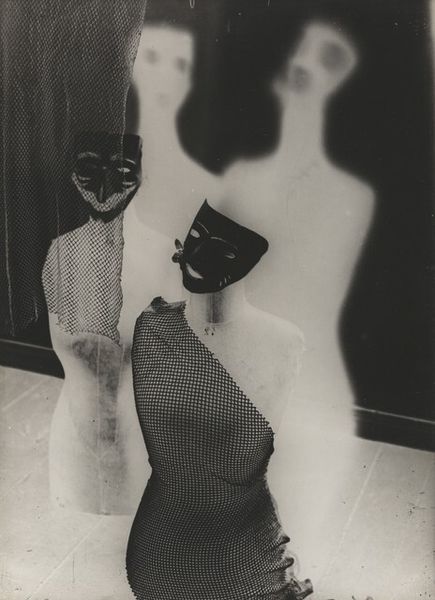
print, photography, gelatin-silver-print
# print
#
sculpture
#
charcoal drawing
#
figuration
#
negative
#
charcoal art
#
photography
#
geometric
#
gelatin-silver-print
#
charcoal
#
graphite
#
modernism
Dimensions: overall: 20.6 x 27.8 cm (8 1/8 x 10 15/16 in.)
Copyright: National Gallery of Art: CC0 1.0
Curator: This arresting gelatin-silver print is from Alexey Brodovitch's "Ballet" series, dating roughly from 1933 to 1945. Editor: Stark! It's overwhelmingly contrastive. The composition almost entirely divides itself between black and white. It has an anxious mood to it. Curator: Brodovitch, as a prominent figure in the development of graphic design and art direction, often used unconventional photography. His impact on publications like "Harper's Bazaar" was immense, and here you can see his keen eye for capturing movement and form in innovative ways. The historical backdrop is crucial; this work emerges from a period of intense artistic experimentation between the wars. Editor: Yes, the stark contrast and distorted forms contribute to the anxiety. What captures my attention, in addition to the strong contrast of the image, is the geometric pattern. It gives this work some tension. What else can we tell from the figures depicted? Curator: Well, given the "Ballet" series title, one can deduce these shadowy figures and strong diagonals relate to stage lighting. What fascinates me is that while Brodovitch highlights the ephemeral and elegant world of dance, his darkroom printing pushes at the idea of art having any one solid representation or intention, and dance having just one perfect capture. He challenges the aesthetic conservatism of the time by introducing these blurred representations and abstraction into mainstream imagery. Editor: I see that completely, and those photographic darkroom manipulations and effects help produce abstraction. The dark silhouette gives way to multiple interpretations, and the stripes also blur into many visual cues. Curator: Absolutely. Brodovitch encourages viewers to interpret and reconstruct narratives themselves. The print not only reflects an artistic shift, embracing Modernism and rejecting strict realism, but also signifies the democratization of image creation; by experimenting with accessible media and techniques. Editor: It does offer a space to engage beyond the pure representation. So it’s much more than documenting a performance; it provokes a certain sensation through stark execution. It’s quite thought-provoking, regardless of the subject. Curator: Precisely. Considering the historical and social changes, Brodovitch democratized vision itself. Editor: I agree; there are far more entry points than at first glance, where light plays the most central role in defining an important historical period.
Comments
No comments
Be the first to comment and join the conversation on the ultimate creative platform.
